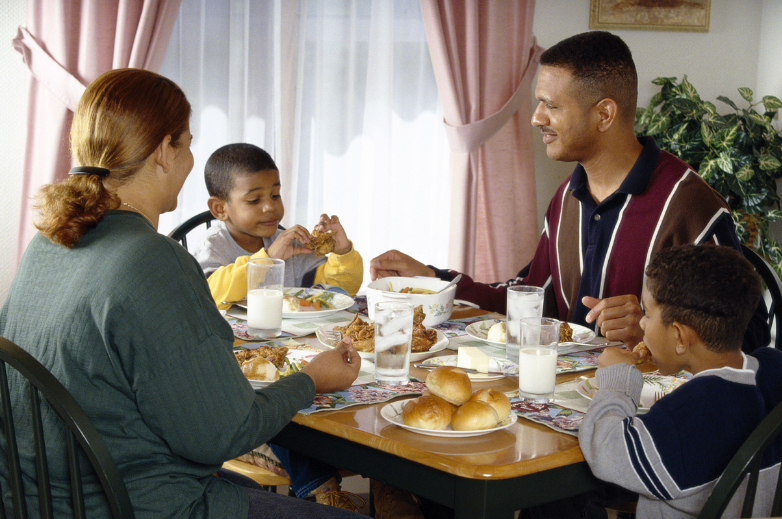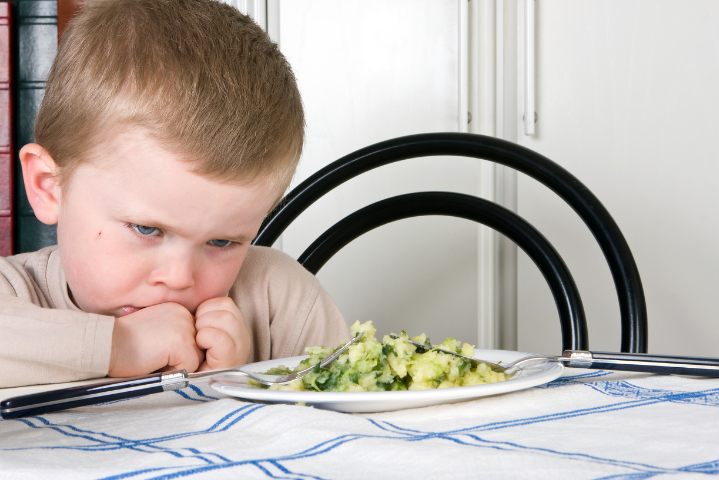Kicking off the New Year, many of us are looking for fresh starts and new approaches, especially when it comes to our family’s eating habits. Today’s blog post, inspired by a popular Instagram post, focuses on a topic close to many parents’ hearts: reversing picky eating. Join me as I share the first five steps I would take to tackle picky eating, setting the stage for a year of healthier, happier mealtimes with your little ones.
1. Sit with Your Kids
January often marks the return to normalcy after the hectic holiday season, with its travel and family visits disrupting our usual routines. But as we leave the chaos behind, it’s a great time to reestablish your regular family routines, particularly when it comes to meal times with your kiddos.
I won’t bore you with the science highlighting the numerous benefits of eating with your little ones. But for those interested in exploring some of the scholarly work on this subject, here are two:
Systematic Review of the Effects of Family Meal Frequency on Psychosocial Outcomes in Youth
The Benefits of the Family Table

Ultimately, for our children, sharing meals at the table presents an opportunity to watch us enjoy the various foods we serve. This acts as a real-time, live-action, nonverbal demonstration of our relationship with food—remember, our kids are always observing and learning from our actions, especially at the dinner table.
2. Stop Using Pressure Techniques
Pressure techniques are the many different ways we apply pressure on our children to get a desired result, particularly at mealtimes. These techniques can take several forms, including:
- Bribing – “You can have dessert if you finish this broccoli.”
- Negotiating – “You don’t have to eat all of the broccoli, but you do have to take at least two bites.”
- Begging – “Please, please eat this for Mommy? I really want you to try this for me, please.”
- Guilting – “I spent a lot of time making this yummy food for you. Don’t you want to make Mommy happy?”
- Demanding – “You cannot leave this table if you do not finish your broccoli.”
- Praising – “You did so great eating that broccoli! I am so, so proud of you for eating that for me!”
Knowing what the most common pressure techniques are is great. But let’s take it one step further and truly understand why these are things you should refrain from.
- Bribing – With bribing, children learn to eat for a reward rather than because of their own hunger or joy. This pressure technique can be especially troublesome because it causes children to learn to eat based on external factors rather than internal ones.
- Negotiating – Going back and forth over when and what to eat sets a precedent for power struggles, creating an environment where they may seek to negotiate to get what they want.
- Begging and Guilting – These create a sense of obligation, which detracts from a child’s natural ability to gauge when they’re hungry and when they’d like to try new things. It can also lead to feelings of shame or anxiety around eating.
- Demanding – Demands at the dinner table can make the dining experience anxiety-inducing and stressful, which may completely deter your little from not only experimenting with new foods, but wanting to engage with family meal time at all.
- Praising – Excessive praise can cause children to eat for approval rather than in accordance with their own internal cues. Praise can also concede kids into thinking that non-praised foods are less desirable or valuable, leading to picky eating in other areas.
Everyone’s family is different. So while these are general rules that apply to most families, they may not apply to yours—I get that. If one of these techniques seems effective, consider closely why your child is responding to it. The aim is to ensure that they are trying new foods based on their own curiosity and hunger cues, rather than to avoid conflict, fulfill a request, or earn a reward.
3. Be Considerate, Don’t Cater
As a parent, my approach involves being considerate of my children’s preferences without yielding to every complaint or resistance they might show. I do this by offering what I call safety foods.
Safety foods are foods I know my kids will find safe and enjoyable, which creates a comfortable launch pad they can leap from (or come back to) when testing the waters with new foods.
What’s important is to avoid running into the kitchen to prepare an alternative meal because your littles refuse to eat what’s on the table. Catering like this often leads to selective eating habits, rather than the open and diverse habits we’re looking to foster.
4. Be Mindful of Food Communication
Our society is deeply entrenched in diet culture. Consider how frequently conversations revolve around guilt for indulging in a treat, counting calories, or declaring a ‘cheat day.’ As adults, we navigate a complex relationship with food, often voicing sentiments like, “I shouldn’t be eating this,” among peers who grasp the cultural context of these statements.
But our attitudes toward food can be confusing to a toddler, who doesn’t understand the cultural and contextual complexities of diet culture. When they hear an adult express regret over eating certain foods—often those that are sweet and appealing—they receive mixed messages.

While an adult may exhibit avoidant behavior towards these sweet, sugary foods, a child becomes conflicted. Then, they struggle to reconcile their enjoyment in these foods with the negative social cues they observe from family members. And as a result, they gravitate toward those foods more in an attempt to understand their internal conflict about those foods.
5. Focus on Making Meals Fun
I vividly remember my childhood mealtimes being incredibly stressful. Now, as a parent dealing with picky eaters, I totally get that mealtime can be filled with questions and concerns. As parents, we often find ourselves too focused on what and how much our kids eat rather than simply being present and enjoying the time with our families. We get fixated on what’s on their forks instead of the shared moments around the table.
Dinner time should be about connecting with your family, and it’s important to make it fun in whatever way best suits your household. This could be through using funny placemats, playing games before dinner, or telling silly stories about the food on your plates. Making meals enjoyable and lighthearted can be incredibly effective in transforming the dining experience into something exciting and welcoming, especially for picky eaters.
Final Thoughts
There you have it, the first five steps I’d take to reverse picky eating in 2024.
By implementing these five steps, you’re laying the groundwork for healthier eating habits, amongst numerous other benefits. Remember, the journey to overcoming picky eating is a gradual process that requires patience, understanding, and a dash of creativity. Embrace these strategies, and watch as mealtime transforms from a battleground into a space of exploration, laughter, and bonding for your entire family.


